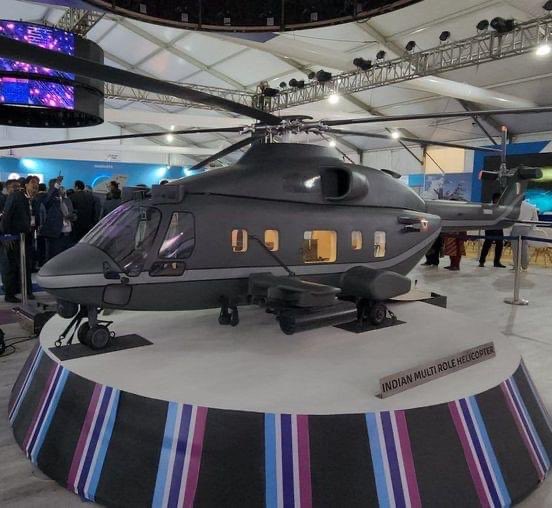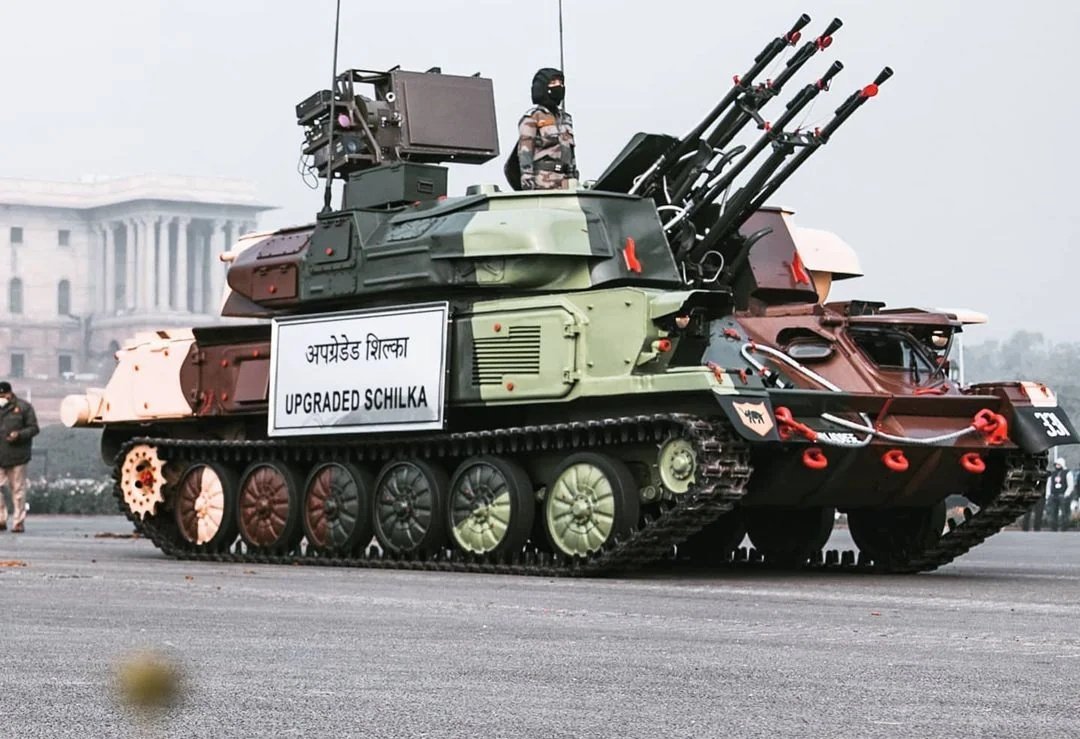AFI
SOURCE: AFI


As the Indian Air Force (IAF) prepares for the Republic Day celebrations on January 26, 2025, it has announced a significant augmentation of its air defense capabilities around the National Capital Region (NCR). In a move to ensure the safety and security of the airspace during the festivities, the IAF is deploying a range of state-of-the-art surface-to-air missile (SAM) systems, including the Medium Range Surface to Air Missile (MRSAM).
The MRSAM, developed jointly by the Defence Research and Development Organisation (DRDO) and Israel Aerospace Industries (IAI), is capable of neutralizing aerial threats at distances between 70 to 80 kilometers. This system, which was inducted into the IAF in 2021, features advanced radar systems and can engage multiple targets simultaneously, offering a robust shield against aircraft, drones, and cruise missiles.
Continue readingSOURCE: AFI


The Border Security Force (BSF) plays a critical role in safeguarding India’s extensive and diverse borders, which span rugged mountains, deserts, dense forests, and vast rivers. The challenges of patrolling such varied terrains often demand innovative solutions. One such potential solution is the deployment of powered paragliders (PPGs) for border surveillance and patrolling.
Powered paragliding involves a motorized harness attached to a paraglider wing, allowing the operator to take off, fly, and land with minimal infrastructure. This lightweight, versatile, and cost-effective technology has proven effective in civilian applications such as adventure sports, aerial photography, and even search-and-rescue operations. Its potential for military and paramilitary use, particularly in surveillance and reconnaissance, is increasingly being explored.
Continue readingSOURCE: AFI


The animated science fiction series Pantheon, released by AMC+ in 2022, has earned widespread acclaim for its thought-provoking narrative on the ethical and existential dilemmas surrounding Uploaded Intelligence (UI). Amidst its global storyline, the series takes an intriguing turn by showcasing critical components of India’s strategic naval capabilities, including the INS Arihant, K-15 Sagarika missile, and INS Kattabomman, reflecting the growing recognition of India’s military prowess in global media.
Set in a near-future world, Pantheon explores the consequences of human consciousness being uploaded into digital realms, turning individuals into “Uploaded Intelligence.” The series follows two teenagers as they uncover the dark realities of this revolutionary technology, which carries immense potential but exacts a heavy human toll.
Continue readingSOURCE: AFI


Bengaluru-based NewSpace Research and Technologies has officially announced the unveiling of their Abhimanyu Collaborative Combat Aircraft (CCA) program, set for February 10, 2025, coinciding with the opening day of Aero India 2025. This announcement was made by Sameer Joshi, CEO & Director of NewSpace, who emphasized the significance of this event, stating, “This is the official unveiling of the program by NewSpace. We are still looking to work with an end user…”
The Abhimanyu platform is designed as a low-cost, expendable asset in the realm of Manned-Unmanned Teaming (MUMT). Its modular design allows it to adapt to various roles including Intelligence, Surveillance, and Reconnaissance (ISR), kinetic attacks, serving as a decoy, and electronic warfare (EW) missions. This versatility positions Abhimanyu as a game-changer in tactical aerial capabilities, offering a cost-effective solution for modern warfare scenarios.
Continue readingSOURCE: AFI


In a stride towards a greener, more sustainable future, Sagar Defence Engineering (SDEPL) has announced a groundbreaking partnership with Flowcopter, aiming to revolutionize the realm of heavy lift drones. This collaboration is set to usher in an era where logistics and aerial mobility are not only automated, connected, and electrified but also significantly reduce carbon footprints.
Sameer Joshi, CEO of Sagar Defence Engineering, highlighted the challenges and opportunities in this venture, stating, “The future will be #automated, #connected, low carbon, and #electrified. So… how do we get there! The above comes with a high cost when we talk about Green Revolution in terms of Electromechanical actuation, Fuel Cell, Battery power, power electronics, and above all, can we sustain the investment. But yes, there can be #GreenEvolution – which can give us an evolutionary path towards a revolutionary result but with manageable risk and cost.”
Continue readingSOURCE: AFI


Mazagon Dock Shipbuilders is building India’s largest floating dry dock at NHAVA SHEVA FREEPORT TERMINAL near Mumbai as part of a ?5,000 crore expansion plan to handle larger ships, including next-generation destroyers. The ?475 crore dock, built in 6 blocks, will be operational by year-end, enabling the construction of 8 large ships simultaneously.
The facility aims to double capacity and cater to Indian Navy, Coast Guard, export and commercial ship orders.
Continue readingSOURCE: AFI


A video that has gone viral on social media platforms captures a Bangladeshi border guard commander making a provocative statement about the capabilities of his forces on the Indo-Bangladesh border. In the footage, he asserts, “I am enough to teach BSF a lesson on Indo-Bangladesh border, When I need help, I will call for the villagers to join.”
This statement has ignited a flurry of reactions and debates across both sides of the border, raising questions about border security, nationalism, and the dynamics between the Border Security Force (BSF) of India and the Border Guard Bangladesh (BGB).
Continue readingSOURCE: AFI


The Advanced Light Helicopter (ALH) Dhruv, developed by Hindustan Aeronautics Limited (HAL), has been at the forefront of India’s push for indigenous helicopter manufacturing. However, a series of operational challenges and accidents associated with the ALH-Dhruv cast a long shadow over HAL’s ambitions with the upcoming Indian Multi-Role Helicopter (IMRH) program.
The ALH-Dhruv, known for its versatility, has been in service with the Indian military since 2002, performing roles from troop transport to search and rescue operations. Despite its initial success, the helicopter has faced significant scrutiny due to multiple accidents, some of which were fatal. Investigations have pinpointed issues ranging from metallurgical flaws in critical components like control rods, to design and maintenance challenges. These problems have led to temporary groundings of the entire fleet at various points, prompting urgent safety reviews and modifications.
Continue readingSOURCE: AFI


In 1991, a significant diplomatic row erupted when General Dynamics, one of America’s leading defense contractors, simulated a military scenario where the U.S. would launch an attack on India using its new, long-range cruise missiles. This scenario was part of a broader strategy to demonstrate the capabilities of these missiles to the Pentagon, but it had unintended consequences, particularly on U.S.-India relations.
General Dynamics, a then Fortune 100 company known for its prowess in the defense industry, crafted five war scenarios to showcase the effectiveness of its latest technology. However, it was the scenario set in the year 2000, involving India and Pakistan on the brink of nuclear conflict, that sparked international controversy. In this narrative, the U.S. intervened to prevent a nuclear escalation by deploying aircraft carrier battle groups and nuclear attack submarines. When India declared a maritime exclusion zone, the U.S. responded with an overwhelming missile strike, neutralizing India’s military response capability.
Continue readingSOURCE: AFI


EndureAir Systems has recently introduced the Sabal 20, a drone that is rapidly setting new benchmarks in the realm of helicopter drone technology. With its unique design and advanced capabilities, the Sabal 20 is poised to revolutionize aerial logistics, surveillance, and support operations in challenging environments.
One of the standout features of the Sabal 20 is its exceptional stability, a result of its innovative tandem rotor configuration inspired by the iconic Chinook helicopter. This design not only enhances the drone’s stability but also significantly boosts its load-carrying capacity, allowing it to transport payloads up to 20 kilograms. This capability is particularly crucial for military and rescue operations where delivering heavy equipment or supplies to remote or hazardous locations can be life-saving.
Continue readingSOURCE: AFI


In a significant stride towards self-reliance in defence manufacturing, the Indian Ministry of Defence (MoD) has issued a Request for Information (RFI) for the production of 23mm Anti-Drone Ammunition under the Make in India initiative. This development underscores India’s commitment to enhancing its military capabilities while fostering indigenous defence manufacturing.
The move is aimed at addressing the growing threat posed by unmanned aerial vehicles (UAVs), which have become a critical concern globally due to their diverse roles in surveillance and offensive operations. For the Indian Army, enhancing its ability to counter drones is a strategic imperative, particularly in light of evolving security challenges along its borders and beyond.
Continue readingSOURCE: AFI


The Indian government has greenlit a significant $9 billion deal involving Mazagon Dock Shipbuilders Limited (MDL) and Germany’s Thyssenkrupp Marine Systems (TKMS) for the design and construction of next-generation submarines under Project 76. The deal includes a comprehensive transfer of technology (ToT) that aims to enable India to eventually develop its own indigenous submarine designs.
This collaboration with TKMS marks India’s third major attempt at acquiring submarine technology over the past four decades. The journey began in 1981 when India procured four Type 209/1500 submarines from the German firm Howaldtswerke-Deutsche Werft (HDW), the predecessor of TKMS. Under that deal, two submarines were built in Germany, while two were constructed at MDL. The project was marred by a bribery scandal in 1987, which led to the blacklisting of HDW and stalled further cooperation.
Continue readingSOURCE: AFI


In a stride towards enhancing its aerial surveillance and reconnaissance capabilities, India has officially become an observer state in the Eurodrone programme, managed by the Organisation for Joint Armament Cooperation (OCCAR). This development marks a new chapter in India’s defense collaboration with Europe, particularly in the realm of unmanned aerial vehicle (UAV) technology.
The Aeronautical Development Establishment (ADE), a pivotal wing under the Defence Research and Development Organisation (DRDO), has been designated to represent India in this groundbreaking programme. This assignment underscores ADE’s critical role in the advancement of India’s UAV technology and its commitment to integrating global best practices with indigenous innovation.
Continue readingSOURCE: AFI


The Indian Space Research Organisation (ISRO) has recently unveiled updated specifications for its Next-Generation Launch Vehicle (NGLV), named Soorya. This ambitious project has now been designed to reach a towering height of 92 meters, significantly taller than the SpaceX Falcon Heavy, which stands at 70 meters. This comparison was highlighted in a recent graph that juxtaposed these two advanced launch systems.
In a significant boost to India’s space program, the Indian Cabinet last year greenlit the development of the NGLV with an approved budget of ?8,239 crore. The government’s endorsement comes with the promise that the NGLV will carry three times the payload capacity of the current Launch Vehicle Mark 3 (LVM3) at only 1.5 times the cost. This enhancement in payload capacity aims to support India’s burgeoning space exploration goals, including the establishment of a space station and manned lunar missions.
Continue readingSOURCE: AFI


In a testament to their unyielding commitment and technical expertise, the “Black Charger Eagles” of the South Western Command of the Indian Army undertook an extraordinary 24-hour continuous engine changing exercise. This challenging endeavor involved the replacement of engines in one T-90, one T-72 tank, and one BMP armored vehicle under adverse weather conditions.
The exercise, which spanned through the night, was executed in the face of cold temperatures, relentless rains, and poor visibility, conditions that would typically hamper such delicate operations. However, the “Black Charger Eagles” turned adversity into an opportunity, showcasing their operational resilience and technical mastery.
Continue reading